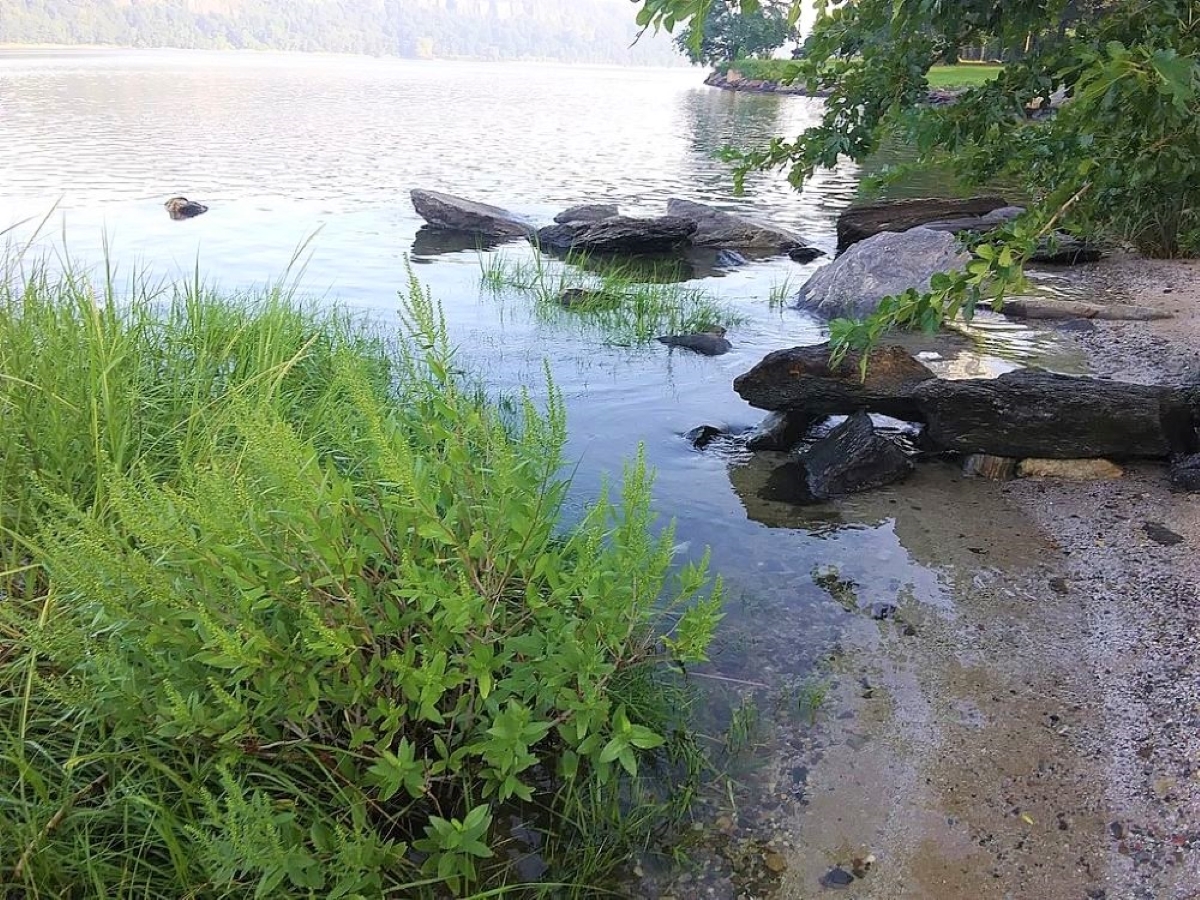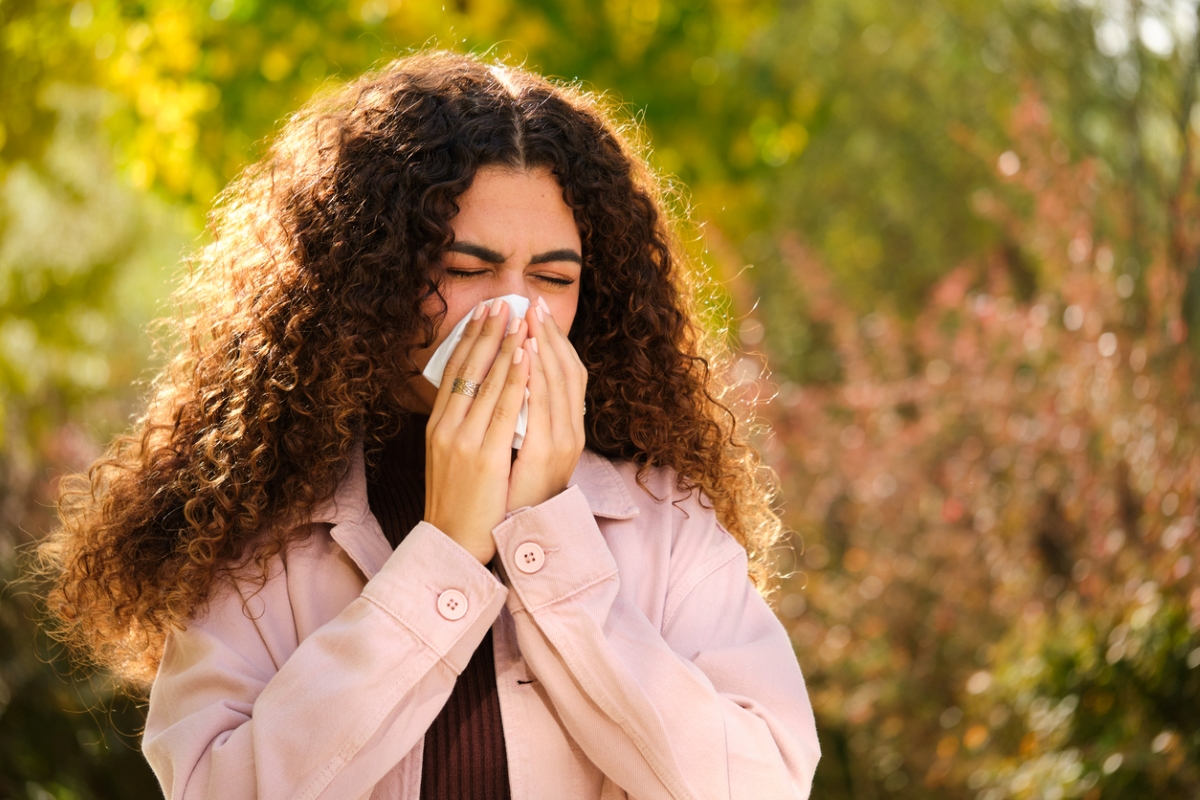We may earn revenue from the products available on this page and participate in affiliate programs. Learn More ›
Every year, roughly one quarter of Americans experience seasonal allergy symptoms, and allergies can be even more pronounced if you happen to live in a city with a higher than average pollen count. Ragweed and other common lawn plants are often blamed for those sniffles and sneezes, but lesser-known plants can also be responsible for nasty seasonal allergies.
Many gardeners and allergy sufferers have never heard of marsh elder (Iva spp.), an inconspicuous plant that’s often found in boggy spots and growing wild in road ditches. However, marsh elder plants can cause severe allergy symptoms and they’re one of the leading plant allergens in, for example, the South.
If you don’t suffer from seasonal allergies, marsh elder plants have some benefits and they can be valuable to have around. But if you suspect marsh elders are causing your allergies and you want to tackle those sniffles at the source, this guide will walk you through identifying and removing marsh elders in an eco-minded way.
What Is Marsh Elder?

North America has 11 native species of marsh elders, including perennial and annual plants and shrubs. These plants belong to the Aster family and, unfortunately for allergy sufferers, they’re closely related to the notorious ragweed. Marsh elders are also called sumpweed or high tide weed because they grow in soggy spots.
Ranging in size from 1 to 6½ feet high, marsh elders generally have serrated, lance-shaped, deciduous leaves and white, yellow, or green flowers that bloom in late summer to fall. When flowering, marsh elders produce an abundance of pollen that travels far on the wind. Later in the season, pollinated plants yield small, dark seeds that readily self-sow.
Where Is Marsh Elder Found?
Tolerant of a range of soils, sun or shade, and high salinity, marsh elders are adaptable plants that typically grow along riverbanks and in fields, salt marshes, and wetlands. However, marsh elders can also creep into wet ditches along highways and gardens with moist and poorly draining soil. Marsh elders are most common in the southern U.S., but some species have wide ranges and can crop up in the western and midwestern states, as well as parts of New England.
Marsh Elder Allergy Symptoms
Many common allergy symptoms can be caused by marsh elders, including sneezing, coughing, and nasal congestion. Marsh elder allergies also produce itchy and watery eyes and noses, headaches, sinus pressure, and other classic allergy symptoms, which peak when the plants flower from July to November.
Issues caused by marsh elders are very similar to the symptoms produced by ragweed and other irritant plants, and symptoms can also closely resemble the common cold. If you suspect that you’re dealing with a marsh elder allergy, be sure to consult with your doctor for advice on how to manage allergy symptoms.
Removing Marsh Elder

Because marsh elder typically grows in wetland areas, removal can be a bit tricky. Using chemical herbicides on marsh elders is generally not recommended as many herbicide products can harm fish and wildlife and interfere with the wetland ecosystems where marsh elders thrive. Instead, opt for organic and low-impact removal methods whenever possible and be consistent for best results.
Tyler Refsland of the Wild Seed Project, a North Yarmouth, Maine-based organization dedicated to preserving seeds of native plants, recommends “repeatedly cutting plants down during the growing season to prevent them from going to seed.” Then, to keep marsh elders from coming back, he says to “sow salt-tolerant, moisture-loving, native plants that can outcompete” marsh elders over time.
For gardeners in the Northeast, Refsland recommends water-loving native plants like swamp milkweed, Joe Pye weed, yarrow, golden alexanders, and boneset. But growers in other areas can find other moisture-tolerant and fast-growing native plants to try.
Ivonne Vazquez of Bas Rouge Farm & Forge, a nursery in Orono, Maine, suggests planting native rushes and switchgrass, which “in addition to being salt tolerant, grows to over 3 feet in height and adds multi-season interest in any setting!”
If marsh elders are growing in an area that’s hard to access, removal may not be possible. If this is the case, you may want to explore other techniques and products for allergy sufferers and invest in a high-quality air purifier.
Benefits of Marsh Elder
Removing marsh elder plants is one option, but marsh elders do provide some benefits to ecosystems and wildlife. Whether you remove them or not is up to you, but if marsh elders aren’t causing you significant problems, you may want to leave them just as they are.
Although marsh elders are not particularly ornamental, as wetland plants they help to prevent shoreline erosion and may limit flooding in coastal regions. Marsh elders also provide valuable habitat for insects and birds, like red-winged blackbirds and marsh wrens, which use their foliage as nesting and foraging spots. Not to mention, bobwhite quails love snacking on marsh elder seeds and those seeds have historically been used as an edible grain by indigenous peoples.

